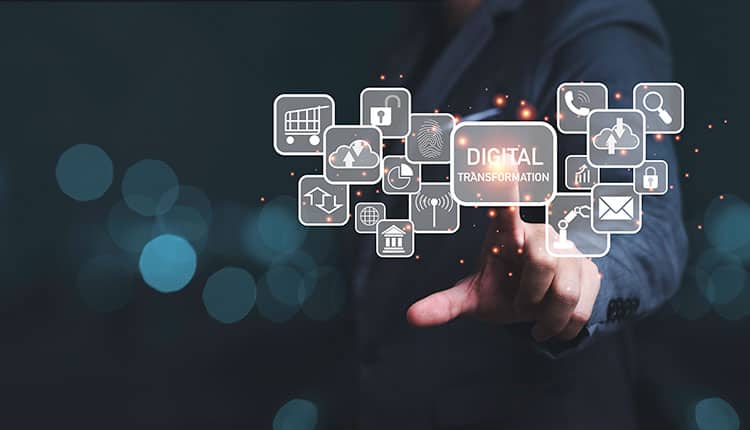By Mainak Maheshwari, Director, Talent Advisory at PeopleAsset and Dimple Gudivada, Management Intern at PeopleAsset, IIM Indore (MBA batch of 22-24)
The AI revolution is unfolding even as you read this. Understandably, there is a significant amount of buzz in the corporate world surrounding the benefits, challenges, and possibilities that come with the acceptance and adoption of AI technologies. When AI comes into play in HR, it promises to change the way organisations manage their most valuable asset, which is their people. Having started from mere automation of everyday operations, it is now transforming how HR can recruit and retain talent.
AI & HR today
In Eightfold AI’s report The Future of Work: Intelligent by Design, 73% of HR leaders surveyed said they are already using AI across HR functions like recruitment and hiring, performance management (72%), and onboarding new employees (69%). It is evident that AI-powered tools are continuously improving HR practices significantly, from hiring and onboarding to performance management and employee engagement. Using AI, organisations can tap into vast amounts of data to make better hiring decisions, find the right talent, and enable a more seamless and meaningful onboarding process. It also plays a key role in improving employee performance and growth, enhancing succession planning, creating more aligned learning opportunities, improving compensation, and boosting employee engagement and experiences, among other things.
Anyone who has ever been involved in attracting and hiring new talent will agree that sourcing, screening, recruiting, and finally onboarding top talent is no cakewalk. Especially in this hyper-competitive environment with a geographically diverse talent pool and a growing demand for niche skills. When it comes to data-driven talent acquisition and recruitment, AI enables organisations to streamline processes, enhance decision-making, and identify top talent more efficiently.
Let’s find out how organisations can leverage such technology at every step of the recruitment process:
1. Planning stage
The first step for any organisation looking to strengthen its workforce and its hiring process is to identify and plan out its hiring needs. This involves mapping out a clear budget, conducting a skills gap analysis, and drawing a blueprint of what the ideal candidate looks like. AI algorithms can analyze hiring data, market trends, and business projections to forecast future talent needs. At the same time, it can analyze the existing team’s skills, strengths as well as areas of improvement, and compare them with the skills required for upcoming roles. This enables proactive planning to fill any skills or talent gap through reskilling, upskilling, or external hiring.
2. Solving sourcing
In the present scenario, sourcing talent is a complex and highly demanding task. However, using AI-powered tools organisations can analyze data from a wide range of sources, such as social media platforms, professional networks, job boards and industry databases, to identify potential candidates. This empowers organisations to broaden their search and tap into top-tier talent, who may not have applied for job openings directly, from diverse sources and backgrounds; something they could not have done using traditional sourcing methods.
3. Simplify screening
Attracting the right people hinges heavily on a well-articulated job description. Implementing AI in recruiting can help improve this. AI-powered language models, for instance, can help HR professionals articulate job descriptions by providing suggestions and improvements while ensuring clarity and effectiveness. Organisations can also leverage AI to optimise JDs with relevant keywords that help boost search results. Once the roles & responsbilites are clearly defined, AI-powered algorithms can save HR teams valuable time (up to 23 hours for a single hire!) and resources by automating the process of reviewing and screening resumés, analyzing job descriptions and profiles to accurately determine the degree of match.
4. Accurate assessments
With the use of chatbots and virtual assistants, HR teams can carry out a preliminary round of virtual interviews that can help with a first-level assessment of candidate behavior and soft skills, such as cognitive and personality tests to predict the candidate’s match. Additionally, advanced algorithms can analyze facial expression, tone of voice, word usage to provide insights into the candidates emotional intelligence and personality traits. While it may not have the nuances of human communication, chatbots can help address the candidates’ queries regarding employment terms & requirements, remuneration, and benefits while also providing updates on the next steps.
5. Hiring and onboarding
When it comes to the final step of selecting, rolling out an offer, and onboarding a new employee, AI tools can help create a more personalised, employee-centric experience. Analyzing data around their skills, experience, goals, and learning preferences, it can recommend relevant learning & training resources, create tailored development paths, and monitor impact to ensure performance-focused progress for both the employee and the organisation.
Parting thoughts
The number of organisations using AI is consistently growing. From sourcing and screening candidates to interviewing, assessing, and even onboarding new hires, AI comes with a multitude of benefits. Of course, like everything else, it’s not without its challenges. It is important to remember that while AI provides valuable assistance across each step of the hiring process, it cannot eliminate human interference. The two must work together to truly transform hiring as we know it.



